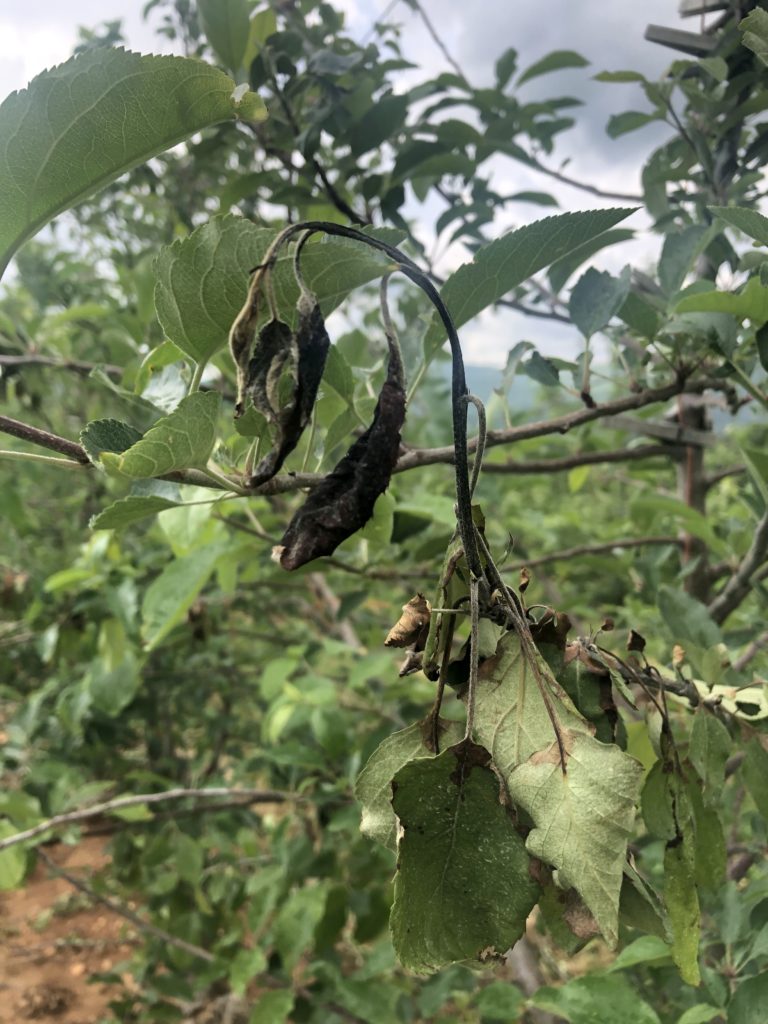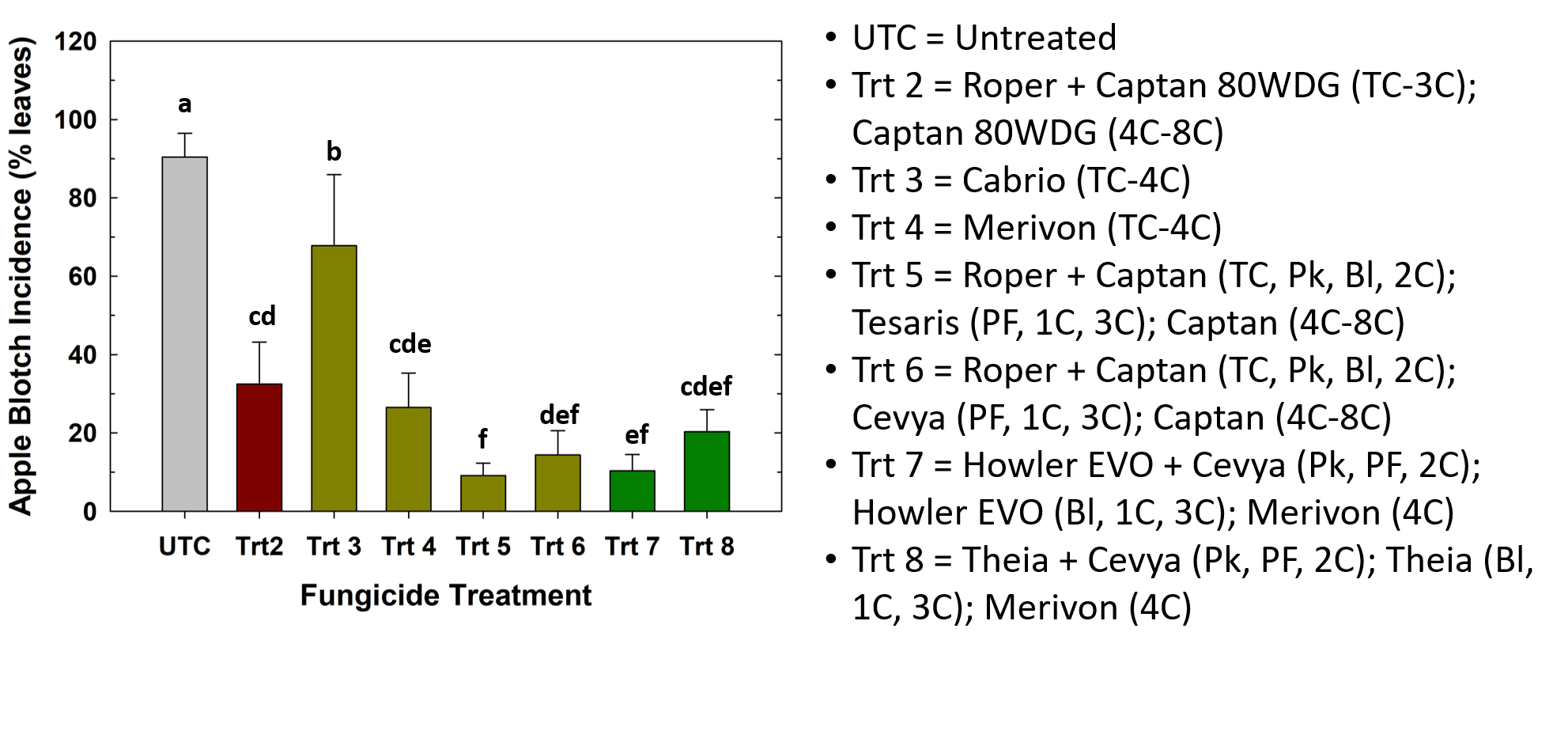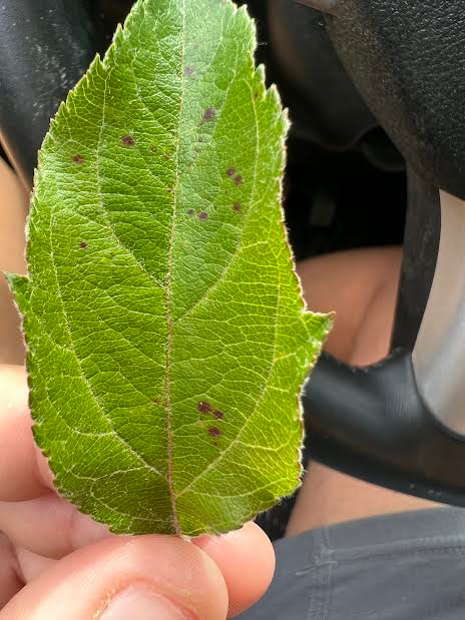2025 Apple Disease Update: Petal Fall/1st Cover/Blossom Blight Risk
go.ncsu.edu/readext?1067449
en Español / em Português
El inglés es el idioma de control de esta página. En la medida en que haya algún conflicto entre la traducción al inglés y la traducción, el inglés prevalece.
Al hacer clic en el enlace de traducción se activa un servicio de traducción gratuito para convertir la página al español. Al igual que con cualquier traducción por Internet, la conversión no es sensible al contexto y puede que no traduzca el texto en su significado original. NC State Extension no garantiza la exactitud del texto traducido. Por favor, tenga en cuenta que algunas aplicaciones y/o servicios pueden no funcionar como se espera cuando se traducen.
Português
Inglês é o idioma de controle desta página. Na medida que haja algum conflito entre o texto original em Inglês e a tradução, o Inglês prevalece.
Ao clicar no link de tradução, um serviço gratuito de tradução será ativado para converter a página para o Português. Como em qualquer tradução pela internet, a conversão não é sensivel ao contexto e pode não ocorrer a tradução para o significado orginal. O serviço de Extensão da Carolina do Norte (NC State Extension) não garante a exatidão do texto traduzido. Por favor, observe que algumas funções ou serviços podem não funcionar como esperado após a tradução.
English
English is the controlling language of this page. To the extent there is any conflict between the English text and the translation, English controls.
Clicking on the translation link activates a free translation service to convert the page to Spanish. As with any Internet translation, the conversion is not context-sensitive and may not translate the text to its original meaning. NC State Extension does not guarantee the accuracy of the translated text. Please note that some applications and/or services may not function as expected when translated.
Collapse ▲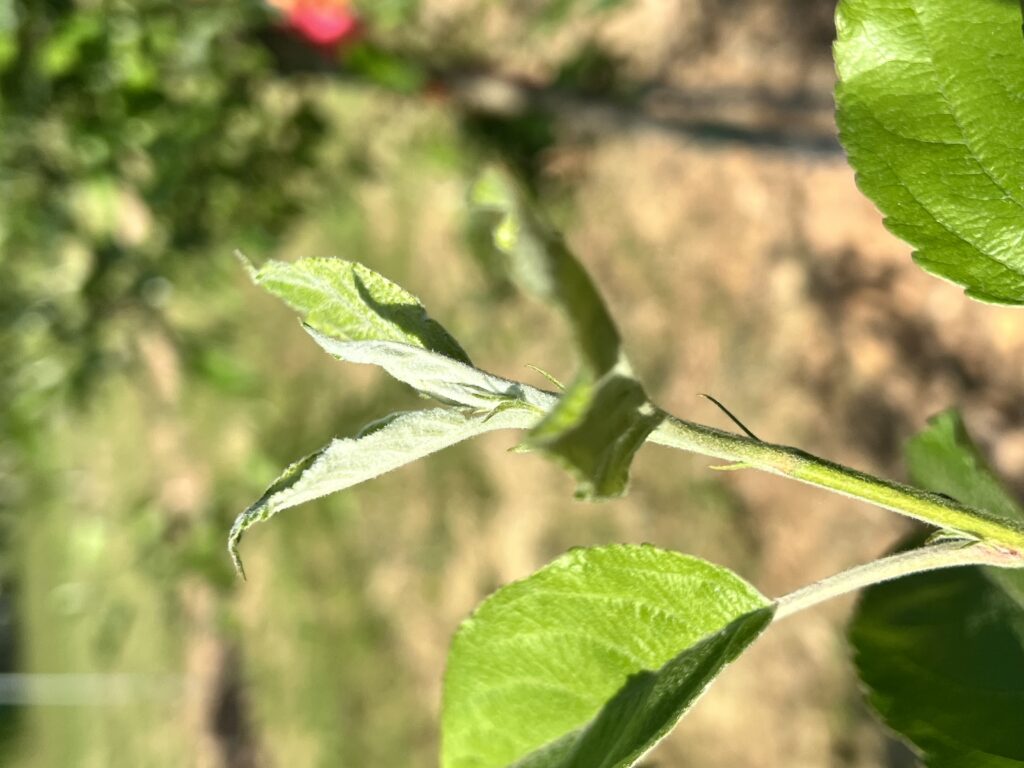 Speaking to a colleague the other day, I made the comment to him that western NC is experiencing a New York Bloom. What does that mean? Well, in upstate NY where I’m from, we usually went from king bloom to petal fall in about 7-10 days or so. And with the exception of a few cultivars, bloom always at least seemed pretty synchronized across our research orchards. When I arrive in North Carolina, I was shocked to learn that bloom on a single cultivar could last nearly 30 days, especially when a freeze or two happened during this period. The past two years I think one of my Gala blocks had three distinct bloom periods! That said, at least at the research station, many of our cultivars are at least at 50% petal fall this year. Yesterday, my Evercrisp, Fuji, and Honeycrisp still had plenty of flowers and my Rome’s had barely started. Thus, we are not out of the blossom blight period. Here’s a look at the Blossom blight risk for this week:
Speaking to a colleague the other day, I made the comment to him that western NC is experiencing a New York Bloom. What does that mean? Well, in upstate NY where I’m from, we usually went from king bloom to petal fall in about 7-10 days or so. And with the exception of a few cultivars, bloom always at least seemed pretty synchronized across our research orchards. When I arrive in North Carolina, I was shocked to learn that bloom on a single cultivar could last nearly 30 days, especially when a freeze or two happened during this period. The past two years I think one of my Gala blocks had three distinct bloom periods! That said, at least at the research station, many of our cultivars are at least at 50% petal fall this year. Yesterday, my Evercrisp, Fuji, and Honeycrisp still had plenty of flowers and my Rome’s had barely started. Thus, we are not out of the blossom blight period. Here’s a look at the Blossom blight risk for this week:
Henderson County: As of Sunday April 13, 2025 the highest risk you have for blossom blight infection is a moderate risk on April 14th. The EIP on that day is 66 and there is no wetting event predicted which is why this is a moderate risk. A pesticide application on Monday could elevate you to a high risk, but even then given the cool temperatures we’ve had the EIP is not too close to the 100 value threshold. If you are concerned and you have active infections in your block, an application of strep, oxytetracyline, or Kasumin 2L might be helpful and put your mind at ease.
Polk County: If you still have open flowers, your outlook is a bit different. EIP values are near or above the 100 value threshold from April 14th onward. As of April 13 2025, your at a moderate or high risk all week. Even if there is no rain, a pesticide application or a dew event could be enough the next couple of days to cause an infection. Especially if you plan on spraying at the beginning of the week, if you have open flowers still on your trees, I’d encourage an antibiotic application. Alternative, Blossom Protect has worked fairly well here in NC for blossom blight. It’s a yeast that is OMRI labeled and works two-fold. First it competes for space with the fire blight pathogen on the flower stigma, thus Erwinia populations lower. Secondly it induces host defense genes. The trick here though is to apply it at least two days or so prior to the infection event. This could be beneficial for moderate risk events later in the week.
Wilkes County: As of Sunday April 13, 2025 the highest risk you have for blossom blight infection is a moderate risk on April 14th. The EIP on that day is 66 and there is no wetting event predicted which is why this is a moderate risk. A pesticide application on Monday could elevate you to a high risk, but even then given the cool temperatures we’ve had the EIP is not too close to the 100 value threshold. If you are concerned and you have active infections in your block, an application of strep, oxytetracyline, or Kasumin 2L might be helpful and put your mind at ease.
In addition to blossom blight, this week you should consider making your first application of Kudos on many cultivars. I posted on this last week, so I won’t go over it again. Tom Kon’s former PhD student and current Assistant Professor at the UT-Knoxville, conducted extensive research on the effects of prohexadione calcium (Kudos, Apogee) on young tree vigor, fruit quality, and shoot blight management. This work was conducted as part of nationally coordinated USDA-NIFA-SCRI project to understand how biorational products and prohexadione calcium perform in different apple production regions. Annie will be making a guest post on her research early this week.
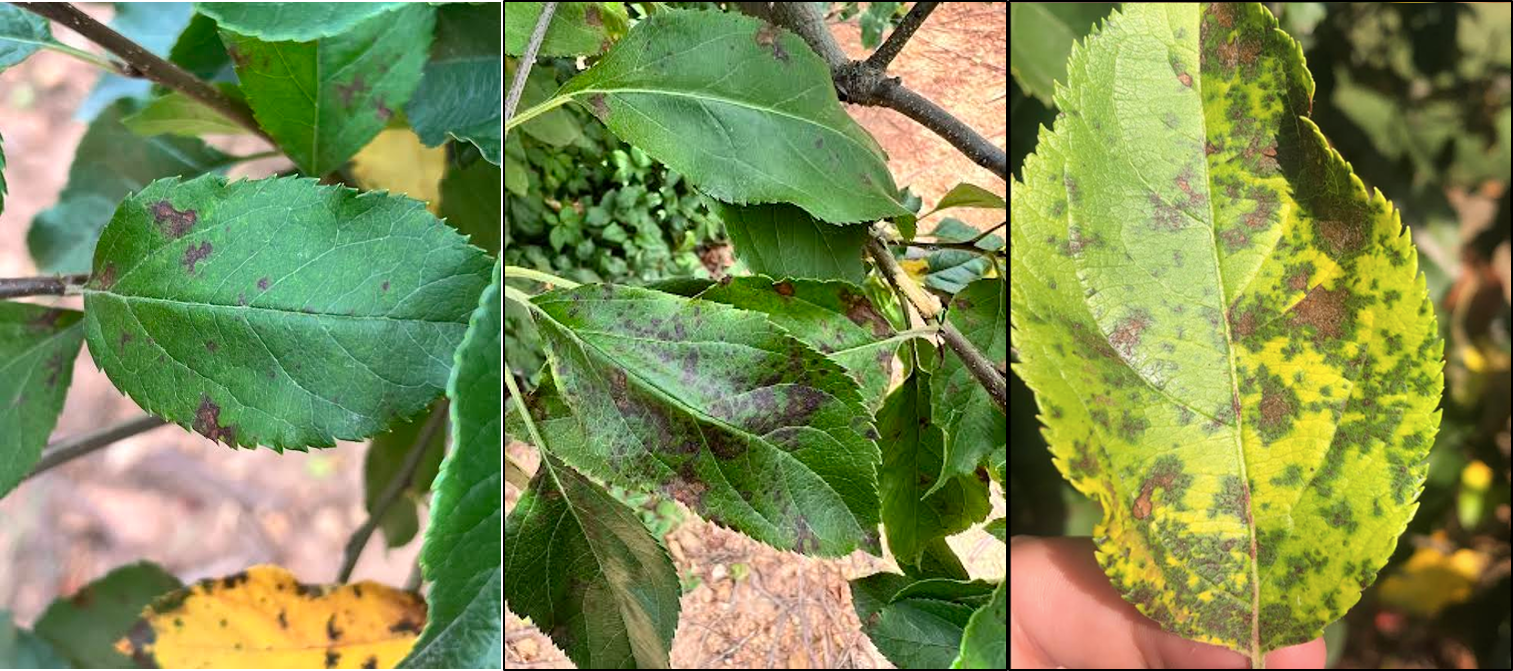 If you haven’t had Marssonina on the mind, now’s the time to start. We’ve had quite a bit of success in NC targeting primary infection of Marssonina leaf blotch, also called apple blotch, from pink bud through second cover. Below are results of trials with conventional fungicides, and with conventional fungicides rotated with the biopesticide Howler Evo, in 2023. This trial was conducted on ‘Rome Beauty’ and fungicides were applied on 14 day intervals.
If you haven’t had Marssonina on the mind, now’s the time to start. We’ve had quite a bit of success in NC targeting primary infection of Marssonina leaf blotch, also called apple blotch, from pink bud through second cover. Below are results of trials with conventional fungicides, and with conventional fungicides rotated with the biopesticide Howler Evo, in 2023. This trial was conducted on ‘Rome Beauty’ and fungicides were applied on 14 day intervals.
- Tesaris (SDHI-FRAC 7; fluxapyroxad) in rotation with captan + mancozeb, provided excellent control. This was not a fluke as similar results were observed in our 2024 trials.
- Cevya (DMI-FRAC 3) in rotation with captan + mancozeb, also provided excellent control. Surprisingly this program wasn’t as strong against MLB in 2024 so we are repeating it this year.
- Howler Evo (or Theia, another biopesticide) alternated with Cevya + Howler Evo also provided excellent disease control.
- FRAC 11 (strobilurins) and captan + mancozeb did not provide as strong of control as other programs mentioned above. However, Merivon (pyraclostrobin + fluxapyroxad) performed statistically better than Cabrio (pyraclostrin), likely because of the fluxapyroxad (Tesaris) component.
I haven’t been jumping to discuss our leaf favorite NC apple disease: Glomerella leaf spot! With the exception of April 14th, relatively cool weather is in store for the rest of the week in Henderson county. Furthermore, no rain is predicted. With the exception of making applications no longer than 10 day intervals, I wouldn’t start adding the heavy lifters yet. Make sure to include mancozeb in the tank mix if you are If you’re in Polk County and you plan on spraying towards the end of the week, I’d suggest considering including Omega or Aprovia to the tank with mancozeb. Merivon could be an option, but wait to see if the chances of rain increase more for early next week. If your fungal populations that cause GLS and bitter rot have resistance to the FRAC 11s (strobilurins) Merivon will not be effective. In that case, Omega and Aprovia in tank mixture with captan or mancozeb will be imperative moving forward.
Here are my final thoughts for the week:
- Consider mancozeb + Cevya or Inspire Super for management of scab, powdery mildew, cedar apple rust, and Marssonina leaf blotch control. Tesaris is another option, but it contains fluxapyroxad, a component of Merivon. you want to be careful not to exceed this active ingredient’s seasonal application limit. Mancozeb should be fine to control GLS risk at this time.
- If you are particularly concerned about apple scab or GLS, you could consider an application of mancozeb + Aprovia or mancozeb + Omega (this option more for GLS). Kari Peter has seen good results for Omega for bitter rot management in PA. I’ve been so/so on it here so far, but I’m going to trial it again this season. Make sure to use the highest labeled rates of Omega or Aprovia.
- A FAQ post for Kudos by Dr. Annie Vogel will be posted sometime early to mid-week. This post will hopefully dispel some concerns with Kudos applications on young trees for the management of shoot blight.



